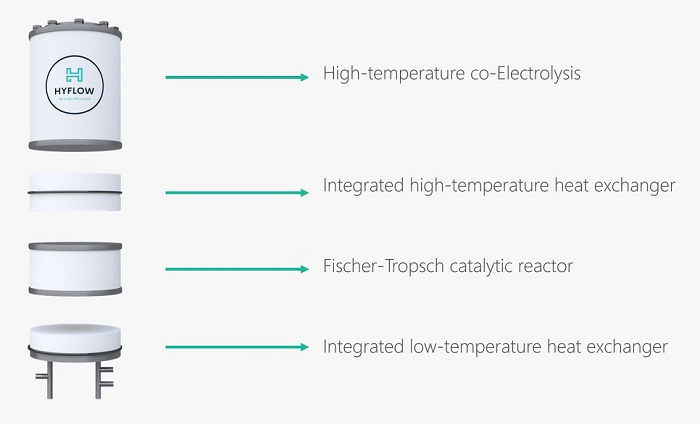
Doctoral candidates from the Warsaw University of Technology developed a system for the production of ecological fuels. They combined a known method of producing liquid fuels with molten carbonate electrolysis using water and carbon dioxide.
The Hyflow system took third place in Tech-Athon - a program for technological solutions with implementation potential, addressed to doctoral candidates from the Warsaw University of Technology. The creators of the idea received PLN 60,000 for further development of the project, the university reports.
'We have developed an innovative system that captures and uses emissions, minimising waste and maximising the overall efficiency of the process,’ says the solution’s creator Aliaksandr Martsinchyk.
The young scientists used the method of producing liquid fuels in the Fisher-Tropsch reactor. They decided to integrate it thermodynamically with molten carbonate electrolysis, which uses water and carbon dioxide. The entire process runs in a closed loop.

'The high fossil fuel emissions in cars is a problem. Our idea can solve the problem of keeping cars with internal combustion engines on the roads in the European Union after 2035. After that date, these engines must be powered by either synthetic or zero-emission fuels,’ says Martsinchyk.
The team also consists of Pavel Shuhayeu, Monika Łazor and Arkadiusz Baran. The idea is being developed at the Faculty of Power and Aeronautical Engineering at the Institute of Thermal Technology, with the participation of the Center for Hydrogen Technologies. The team is preparing two patent applications and a scientific paper.
We want to build a proof-of-concept prototype by 2024. The concept will then be developed with the support of the National Centre for Research and Development, the National Science Centre and other organizations awarding R&D grants. Together with commercial partners, we will be able to implement the idea and build pilot installations', Martsinchyk says. (PAP)
PAP - Science in Poland
kol/ bar/ kap/
tr. RL













